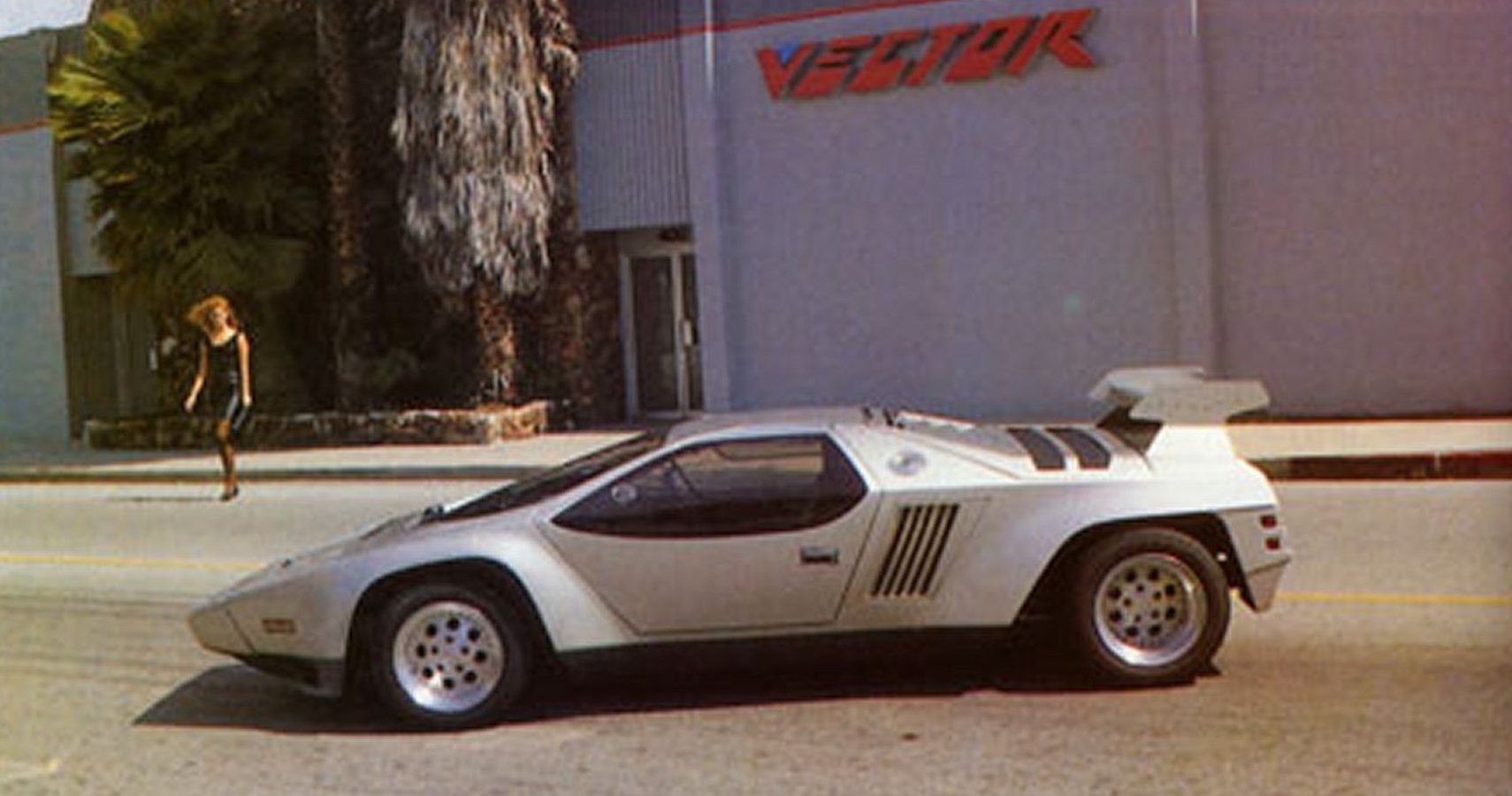The birth of the most magnificent supercars that were just ahead of their time occurred in the 1970s and 1980s. The legendary Lamborghini Countach led the push at the time. The Italian design team Bertone came up with the sharply angled body panels, the almost flat roofline, and the distinctive front "wedge" form. This vehicle ushered in a completely new age of supercar design.
At the time, America was experiencing a severe gas shortage, and muscle cars were gradually losing their allure as a consequence. American sports vehicles seemed to focus less on aerodynamics except for the Ford GT Mk40 developed in the 1960s.
When Jerry Wiegert (Vector Motors' founder) launched his W2 in the 1970s, he had a lot of aims in mind. This design aimed to promote American technology and components on a supercar intended to be worth every penny. As a result, it's the most comprehensive and well-considered American GT car in years.
He said that the Vector was the first supercar in the world. Everything else wasn't a supercar; the other vehicles were sports cars or exotic cars. He went on to say that the other vehicles didn't meet the requirements for a high-tech supercar. The Vector W2's price soared from $50,000 to more than $100,000 as a result.
The Design Of A Fighter Jet
The Vector W2 is a concept automobile with the primary purpose of producing an "aero-mobile." Gerald Wiegert designed the W2 to seem like a low-flying fighter plane, with its sharply flattened roofline, almost flat windshield, and a wedge-shaped narrow front end that expanded as it approached towards the front fenders.
The rear end included horizontal side panels and an integrated spoiler that reached as high as the roofline for better aerodynamics. The design of the teeny-tiny side mirrors is to be as stress-free as possible. It also had the Countach's distinctive scissor doors, giving it a more desired and superior appearance.
With a 103-inch wheelbase and a height of 42 inches, the Vector is a compact vehicle. The fighter-jet theme dominated the dashboard, which featured horizontal scale graphs similar to those seen on fighter planes, as well as a digital display that looked like it came straight from a fighter plane. In addition, the dashboard displayed information about the car's vitals, including RPM and speed, and information on the engine, oil, and coolant.
A premium feature was a performance computer that displayed figures and information for drivers to use while driving. It's incredible to think that this car had digital displays in 1978. Even now, it is realistic to suppose that no supercar will ever stand out as much as the Vector W2.
The Engine Of A Supercar
The W2's powerplant is a fascinating feature. The engine was a twin-turbocharged Chevrolet V8 with 350 cubic inches (5.7 liters). Claimed to have a power range of 600 to 1200 horsepower. However, Vector later updated this value to over 600 horsepower and 600 lb-ft of torque due to factual errors.
The Lamborghini Countach was the sole vehicle to come close to the W2. It had a V12 engine that produced 375 horsepower. The W2 could go from 0 to 60 mph in the low fours, with a top speed of roughly 210-220 mph.
The transmission wasn't up to the task of handling such a powerful supercar. The W2 used the Turbo Hydra-Matic 425 (THM 425) 3-speed automatic gearbox. Slower cars like the Cadillac Eldorado and the GMC Transmode camper from the 1970s used this gearbox. W8 used the identical gearbox, which was ready for production. The Countach had a 5-speed sequential manual gearbox at the time, which provided a much better experience.
The Vector W2 Wasn’t Only Known For Its Design
The Vector W2 has appeared in some films and episodes, including Remington Steele, an iconic American crime drama television series. The Hunter Jet Star 6000 was the name given to the W2; it was a product of a fictional automobile company.
One may also find the Vector W2 in Formula One: Built to Win, a classic video game. SETA Corporation published Winky Soft's racing video game for the Nintendo Entertainment System in 1990. It was one of the first racing games to have a career mode, a variety of automobiles, and the opportunity for the user to tune their car's performance.
What Happened To The Vector W2?
However, due to the global economy, everything went wrong. Wiegert struggled to turn the prototype W2 into a viable concept car. However, he finally created a fully-functional W2 after a highly successful launch and much publicity, including exhibitions at international vehicle events, articles in major automotive publications, and funding from other sources.
Vector released the first production-ready W2 in 1989; however, the name changed to Vector W8. It was an improved model with a larger 6.0-liter Rodeck twin-turbocharged V8 that produced 625 horsepower. Unfortunately, the gearbox remained the same, GM's THM 425 3-speed automatic.
The W2 demonstrated to the world that no man's age could prevent him from thinking about the future and making it a reality. Gerald Wiegert showed that you might remain in the present while your mind is thinking about the future.

